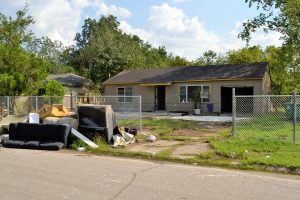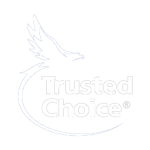 Courtesy of iii.org
Courtesy of iii.org
For those who do not have the right insurance, or who need help beyond their coverage, government programs can sometimes step in to help with post-disaster recovery. Here is a round-up of the most frequently asked questions about the disaster assistance offered by FEMA.
Q. How do I apply for FEMA disaster assistance?
A. You can apply at www.DisasterAssistance.gov or m.fema.gov, or call the FEMA Helpline at 800-621-3362. If you have a speech disability or hearing impairment and use a TTY, call 800-462-7585 directly. If you use 711 or Video Relay Service (VRS), call 800-621-3362.
Q. What happens after I apply for disaster assistance?
A. FEMA will mail you a copy of your application and a copy of Help After a Disaster: Applicant’s Guide to the Individuals and Households Program that will answer many of your questions.
- If you do not have insurance: An inspector will contact you after you apply to schedule a time to meet you at your damaged home.
- If you have insurance: You need to file your insurance claim and provide FEMA with a decision letter (settlement or denial) from your insurance company before FEMA issues an inspection.
- There is an exception for damages caused by flooding; if you have flood insurance, FEMA will issue an inspection before receiving a copy of your flood insurance decision letter to evaluate your eligibility for temporary living expenses since these are not covered by flood insurance.
- About 10 days after the inspection FEMA will decide if you qualify for assistance. If so, FEMA will send you a check by mail (or direct deposit) with an explanation of what the money covers (i.e. rent or home repair).
- If FEMA determines that you are ineligible for any reason, you will receive a letter and be given a chance to appeal. Appeals must be in writing and mailed within 60 days of the determination. Read the letter carefully for the reason of ineligibility before filing your appeal.
- If you get a Small Business Administration (SBA) Disaster Loan application in the mail, you must complete and return it to be considered for a loan or certain types of grant assistance, such as transportation, personal property, and moving and storage.
Q. Why didn’t I receive rental assistance when my home can’t be lived in?
A. If you cannot live in your home because of disaster damage and you did not receive rental assistance, please contact FEMA to check on your status. It could be that during the inspection you indicated that you were unwilling to relocate. If so, FEMA would not move forward to issuing a rental assistance check for you to move to another location.
Q. I received a rental assistance check, how do I find a new place to rent?
A. The FEMA Housing Portal is intended to help individuals and families, who have been displaced by a disaster, find a place to live. The portal consolidates rental resources to help individuals and families find available rental units in their area. This information can be accessed by visiting www.fema.gov and searching “Housing Portal,” or by calling 800-621-3362.
Q. Will my family get assistance faster if we each apply separately?
A. No. If two members of the same household apply for the same damaged home, FEMA assistance could actually be delayed. If more than one member of a household has applied, the additional registrants should call the FEMA Helpline, 800-621-3362 to withdraw their applications. Once this occurs, the original registration for the household can be processed for assistance.
Q. If I received a settlement from my insurance but still have additional needs, what can I do?
A. As soon as you receive an insurance settlement, you should provide a copy to FEMA and identify any unmet needs you have. Although FEMA cannot duplicate benefits that your insurance provided, FEMA may be able to assist you with lost essential items not covered by insurance and can also help you find resources through other recovery partners.
Q. Why did I get a different amount of home repair assistance than my neighbor?
A. Each survivor’s case is unique. There are several factors involved, including insurance status and the extent and type of damage found during the home inspection. If you feel that the assistance you received does not cover your needs for example, the funding you received for repairs are less than the estimates you’ve received from contractors and you have not yet met the FEMA maximum grant you can appeal.
Q. Will FEMA provide additional rental assistance beyond the initial assistance period if I still cannot return to my home?
A. Rental assistance can be provided for up to 18 months from the date of declaration while you are setting up your permanent housing plan. After your initial period of assistance, you will be sent a letter on how to “recertify” if you need additional rental assistance.
Q. Could FEMA assistance affect my Social Security benefits, federal taxes, food stamp (SNAP) eligibility, or Medicaid?
A. No. FEMA assistance does not affect benefits from other federal programs and is not considered taxable income.
Q. I’ve already cleaned up the damage to my home and made repairs. Is it too late to register once the work is done?
A. No. You may be eligible for reimbursement of your cleanup and repair costs, even if repairs are complete. The important thing is to document the expenses you incur. It is a good idea to take before-and-after photos for your records.
Q. If I received disaster assistance last year, could I get it again this year?
A. Assistance may be available if you also suffered damages from a previously federally declared disaster.
Q. My child is a U.S. citizen, but I am not. Can I apply for FEMA disaster assistance?
A. If anyone in an affected household is a U.S. citizen, non-citizen national or qualified alien (a “Green Card” holder), they are eligible to apply for FEMA disaster assistance. If a minor child is eligible by these criteria, even when other members of the family are not, the family can file an application on the child’s behalf.
In this case, all identification documents have to be in the child’s name and Social Security number. The copy of the child’s Social Security card and birth certificate are acceptable verification. This information can be mailed to FEMA or brought to a Disaster Recovery Center.
Additional resources
For more information, visit the FEMA website.



